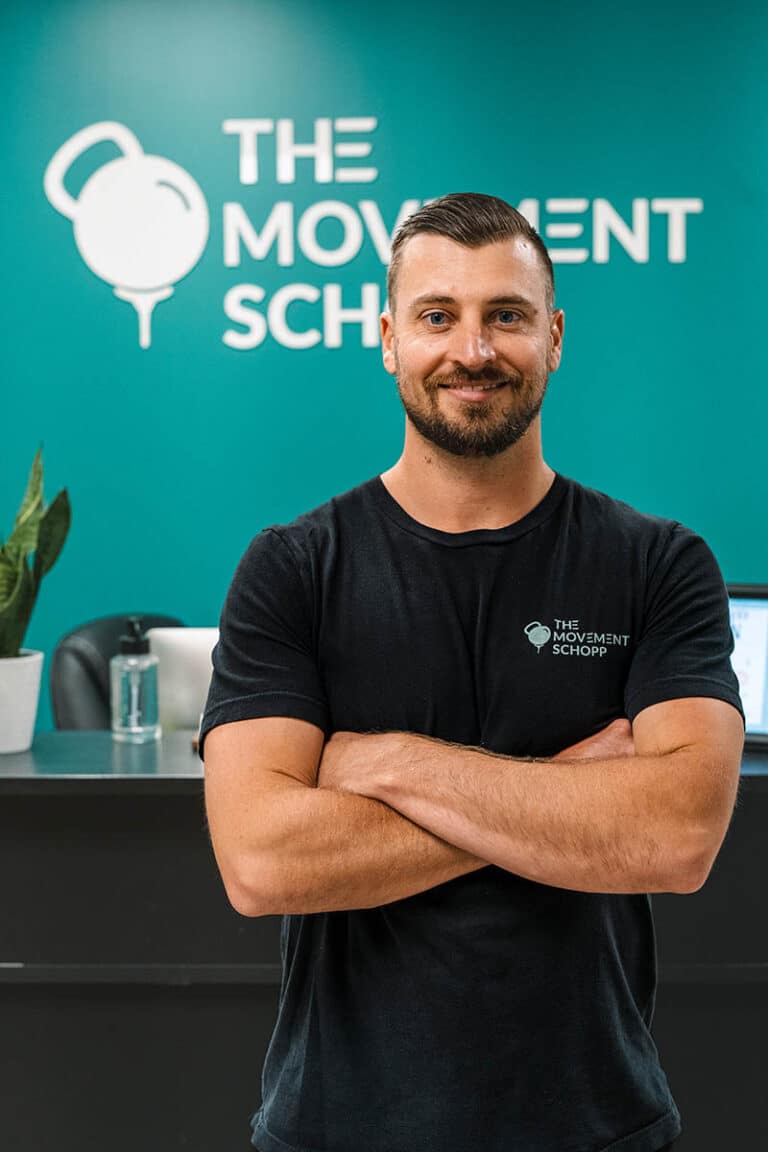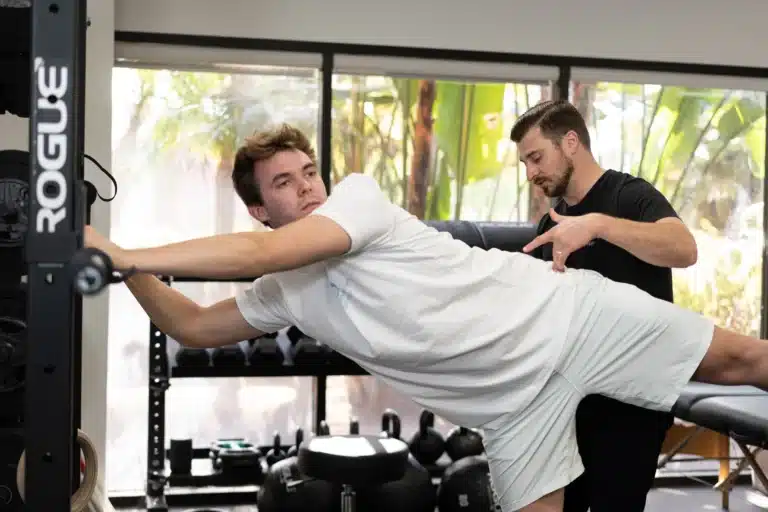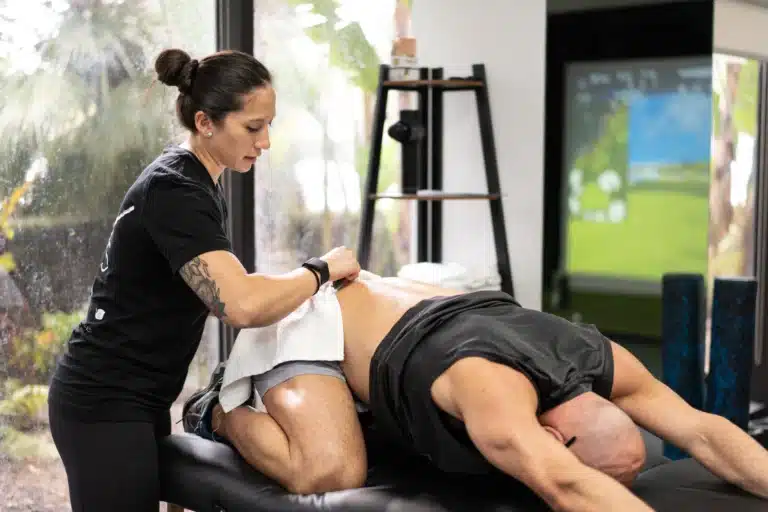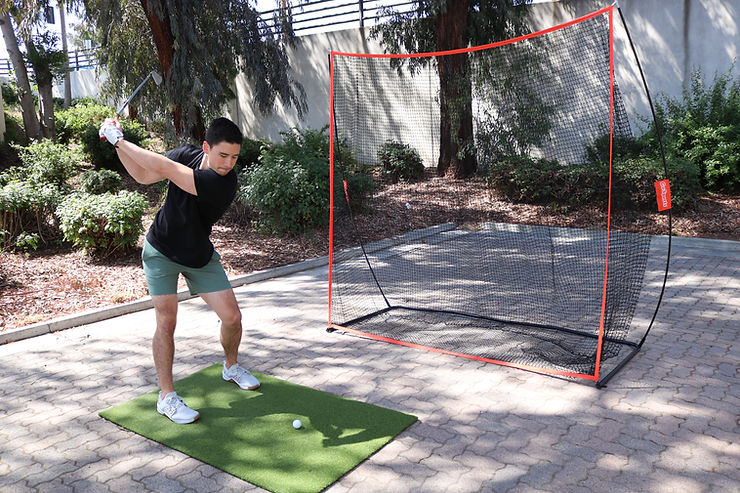Running is an excellent way to stay fit, relieve stress, and build endurance, but it also comes with the risk of injury. From overuse injuries like runner’s knee to muscle strains, runners of all levels face challenges that can slow them down or keep them off the road. That’s where physical therapy for running performance comes in. By focusing on injury prevention, recovery, and performance improvement, physical therapy can help runners stay injury-free and reach their full potential.
Common Injuries for Runners
Before we dive into how physical therapy can help, it’s important to understand the most common injuries runners face:
- Runner’s Knee: Pain around the kneecap caused by overuse or improper running mechanics.
- Shin Splints: Pain along the shinbone due to overloading of the leg muscles.
- Achilles Tendonitis: Inflammation of the Achilles tendon, often caused by overuse.
- Plantar Fasciitis: Pain and inflammation along the bottom of the foot.
- IT Band Syndrome: Tightness in the iliotibial band, leading to pain on the outside of the knee.
These injuries can develop over time, especially when runners increase their mileage too quickly, run on uneven surfaces, or have poor biomechanics.
How Physical Therapy Prevents Running Injuries
Injury prevention for runners is one of the primary benefits of physical therapy. Here’s how physical therapy helps runners avoid common injuries:
1. Gait Analysis and Form Correction
Many running injuries stem from improper running mechanics. Physical therapists can perform a detailed gait analysis to assess your running form, identifying any issues that may be contributing to injury. By correcting these mechanics, you can run more efficiently and with less risk of injury.
Example: A runner in South Bay experiencing knee pain during long runs may undergo gait analysis, where a physical therapist identifies that overstriding is putting excessive strain on the knees. Adjustments to stride length can reduce this strain and prevent further injury.
2. Strengthening Weak Areas
Weaknesses in key muscle groups, particularly the hips, glutes, and core, can lead to compensations that increase injury risk. Physical therapists work with runners to strengthen these areas, improving stability and reducing stress on vulnerable joints like the knees and ankles.
Example: A runner in Torrance may work with a physical therapist to strengthen their glutes, which helps stabilize the pelvis and reduces the risk of IT band syndrome.
3. Mobility and Flexibility Work
Limited mobility in areas like the hips, hamstrings, or ankles can throw off your running form and increase your risk of injury. Physical therapy includes stretching and mobility exercises that enhance flexibility, allowing for smoother, more efficient running motion.
Example: A runner in Hermosa Beach with tight calves may benefit from mobility work to improve flexibility in the lower leg, helping prevent Achilles tendonitis.
How Physical Therapy Improves Running Performance
Physical therapy for running performance is not just about preventing injuries—it’s also about enhancing your overall performance. Here’s how physical therapy can help you run faster, longer, and more efficiently:
1. Improve Running Efficiency
By analyzing and correcting your running form, physical therapists can help you become a more efficient runner. This means you can run at a faster pace while using less energy, allowing you to improve your endurance and speed.
2. Increase Strength and Endurance
Physical therapists design targeted strength training programs that build the muscles necessary for powerful, efficient running. Stronger legs, core, and hips lead to better performance and greater endurance, especially over longer distances.
Example: A marathon runner in Redondo Beach may work with a physical therapist to build leg and core strength, improving endurance during long-distance races.
3. Reduce Recovery Time
Physical therapy techniques, including soft tissue mobilization and stretching, help improve blood flow and reduce muscle tightness, speeding up recovery after intense runs or races. Faster recovery means you can get back to training sooner, without risking overuse injuries.
Example: A runner in Palos Verdes recovering from a half marathon can benefit from physical therapy sessions that include soft tissue work and mobility exercises, allowing them to recover faster and return to training.
Recovering from Running Injuries with Physical Therapy
If you’ve already suffered an injury, physical therapy can guide you through a safe and effective recovery process. Running injury recovery focuses on regaining strength, mobility, and function while preventing re-injury. Whether you’re dealing with runner’s knee, Achilles tendonitis, or shin splints, physical therapists will create a personalized recovery plan to get you back on track.
Example: A runner recovering from plantar fasciitis may follow a physical therapy program that includes stretching, strength work, and gait correction to prevent future flare-ups.
Long-Term Benefits of Physical Therapy for Runners
Physical therapy provides long-term benefits that go beyond immediate recovery or performance gains. By regularly working with a physical therapist, you can:
- Stay Injury-Free: By addressing muscle imbalances, improving flexibility, and refining your form, physical therapy helps you avoid the most common running injuries.
- Maximize Performance: Strengthening weak areas, improving mobility, and optimizing your running mechanics all contribute to better performance on the road or trail.
- Ensure Longevity: Running is a lifelong sport, and physical therapy helps ensure that you can continue running without pain or setbacks well into the future.
Conclusion: Keep Running Strong with Physical Therapy
For runners, staying injury-free and improving performance are top priorities. With physical therapy for running performance, you can achieve both, ensuring that you remain strong, fast, and healthy for the long haul. Whether you’re running in South Bay, Torrance, or Redondo Beach, The Movement Schopp is here to help you prevent injuries, recover quickly, and perform at your best.




